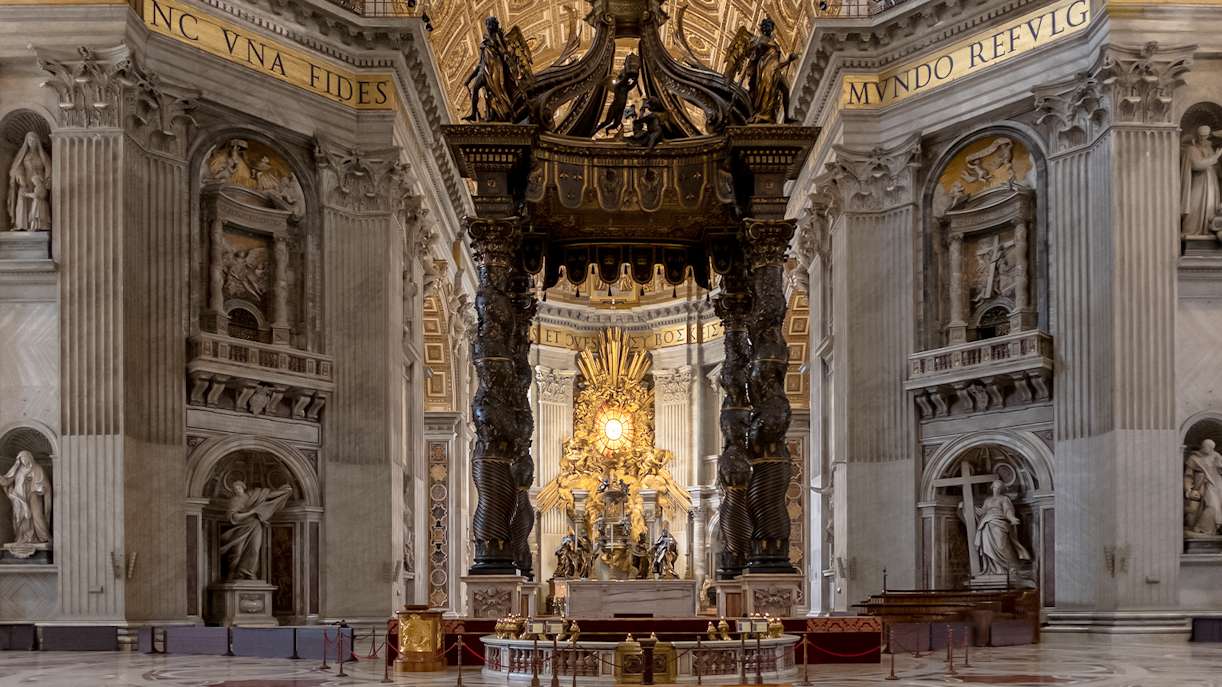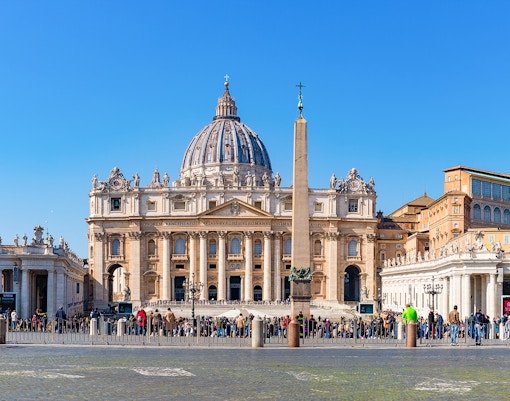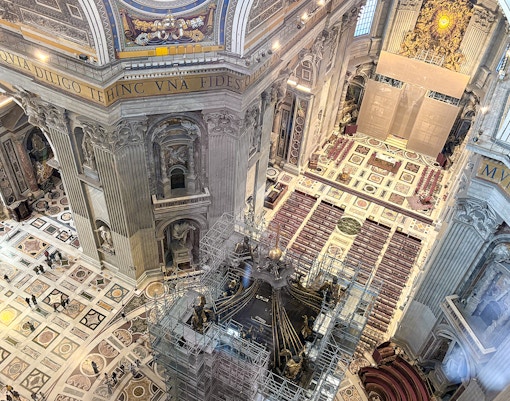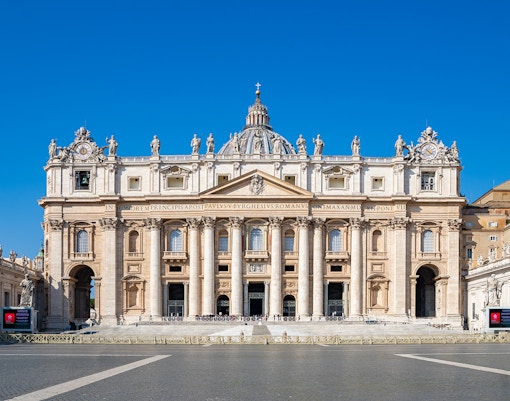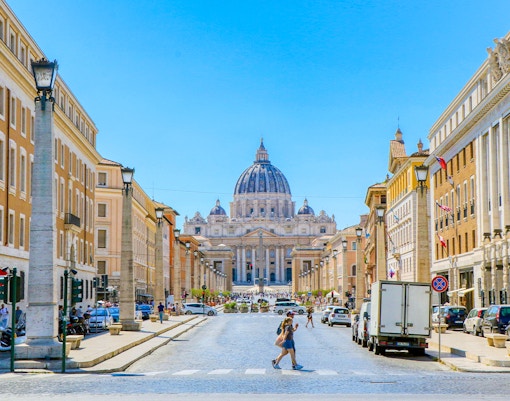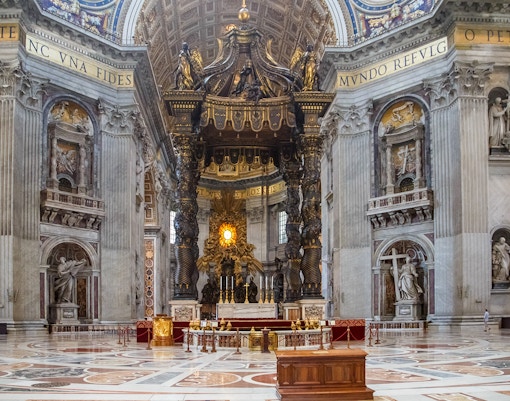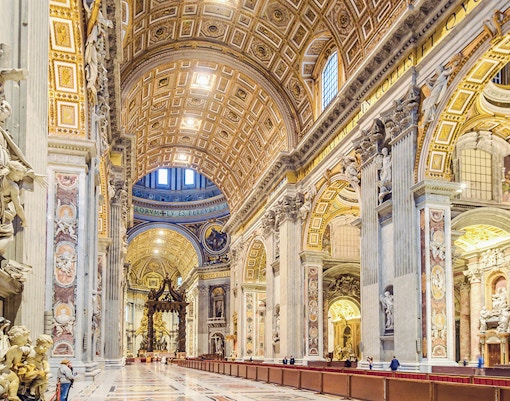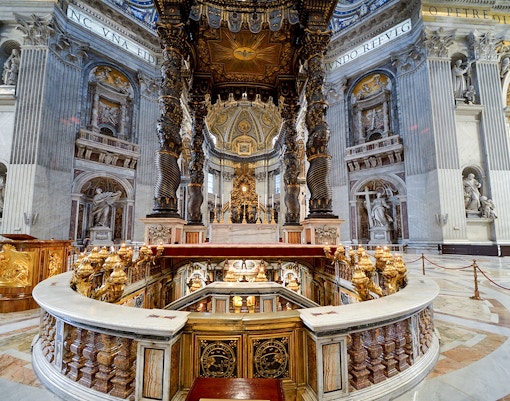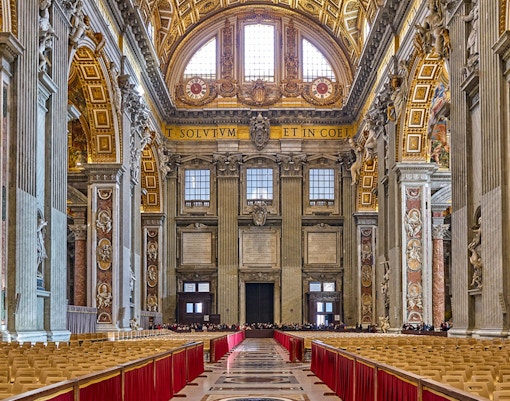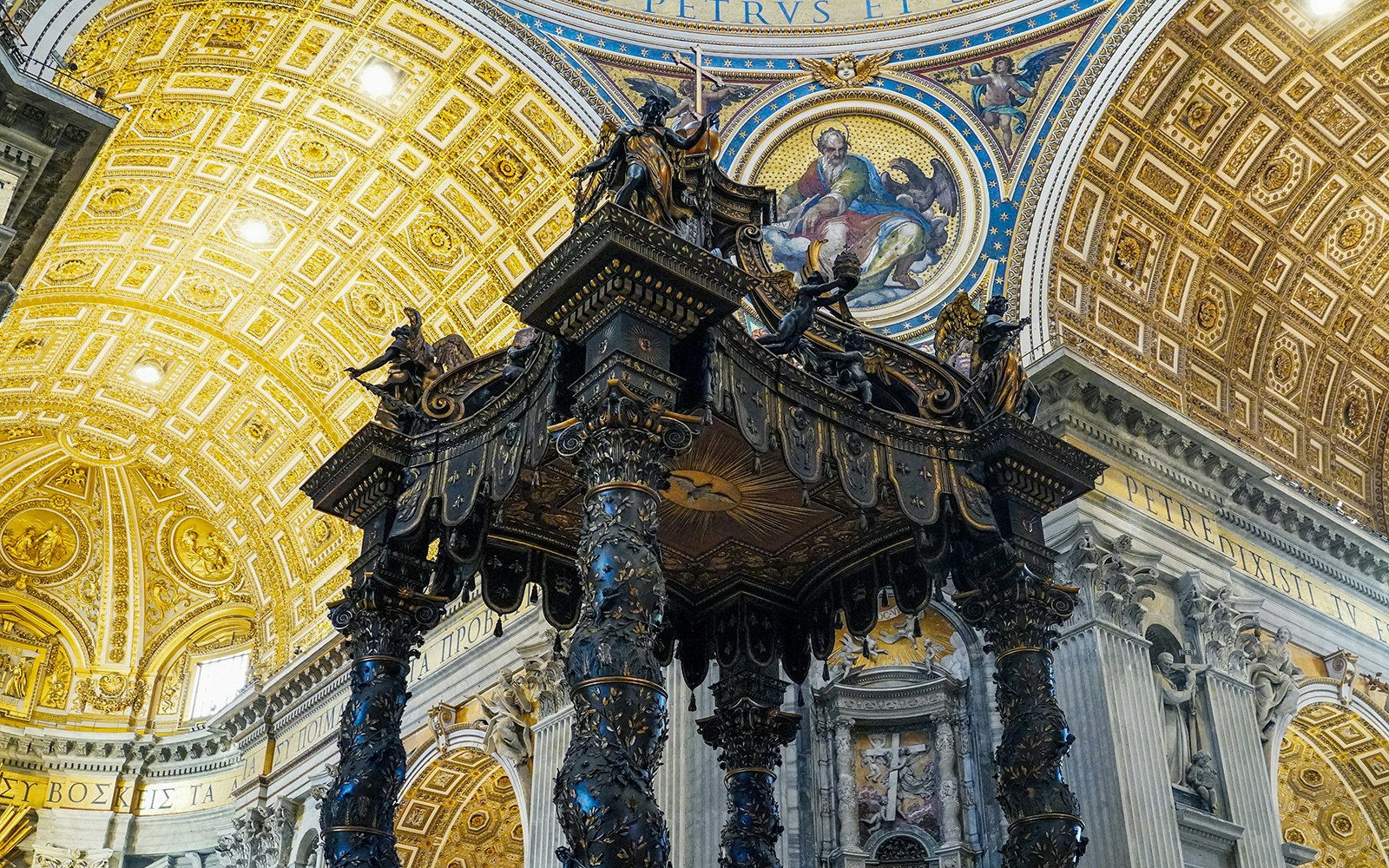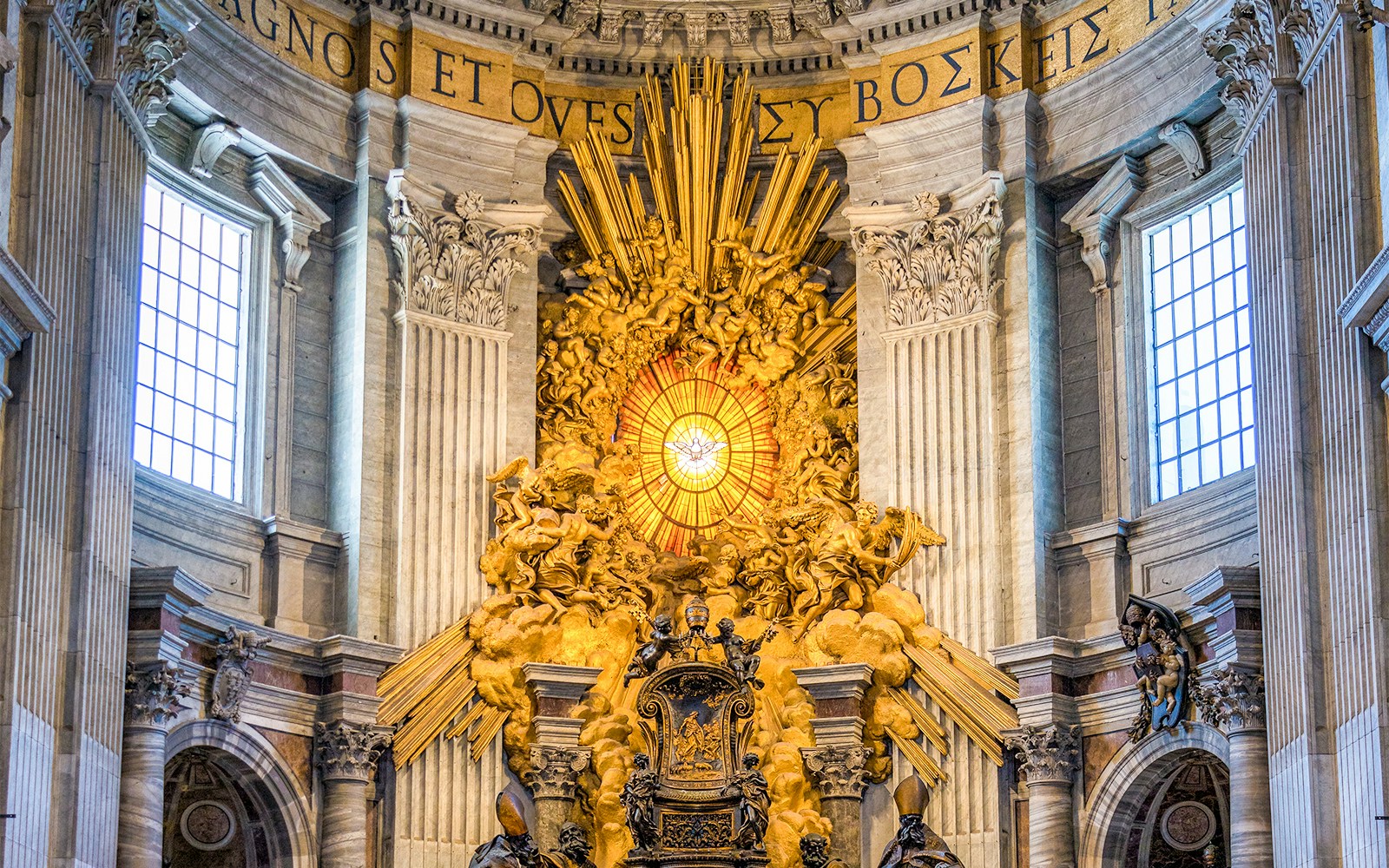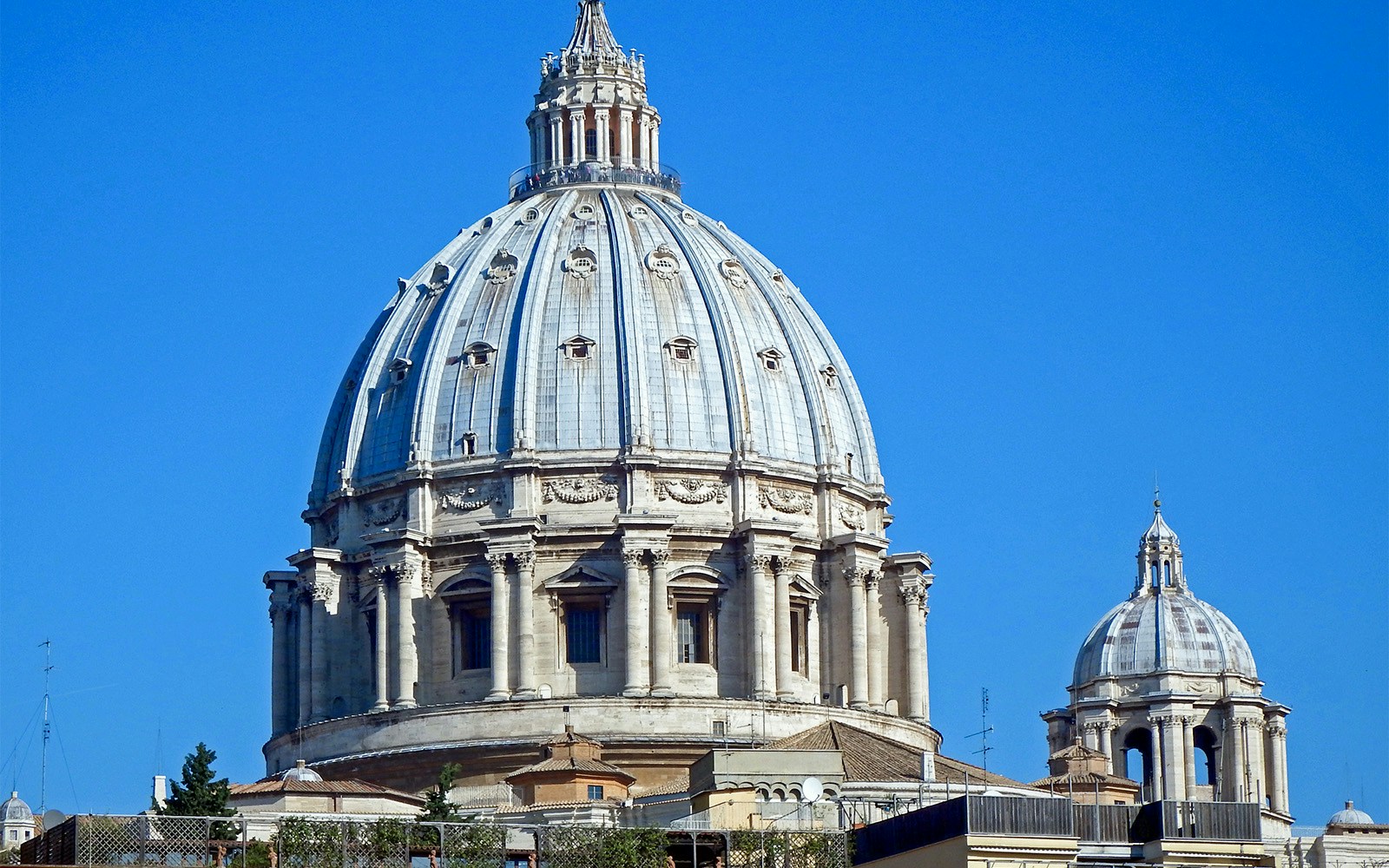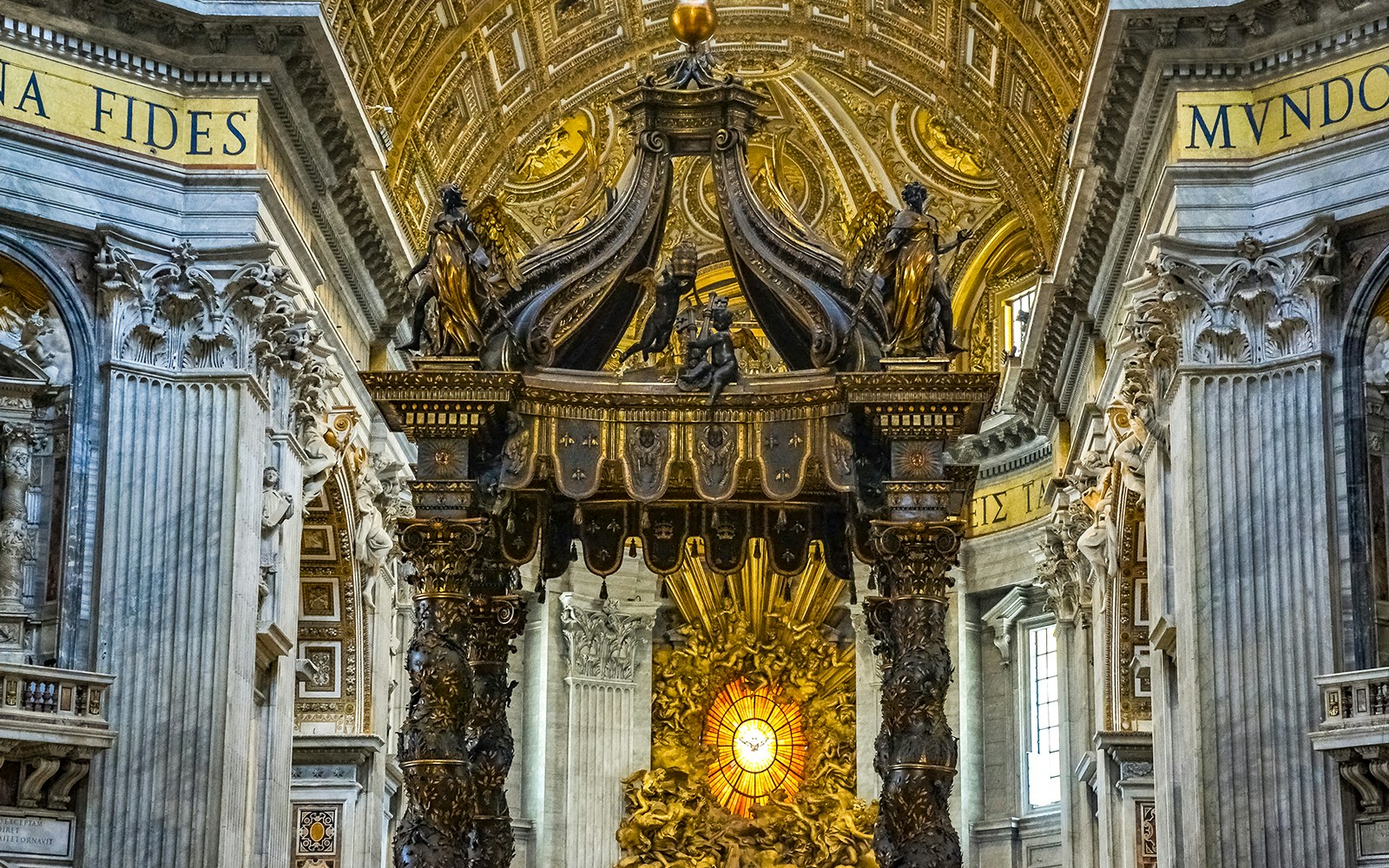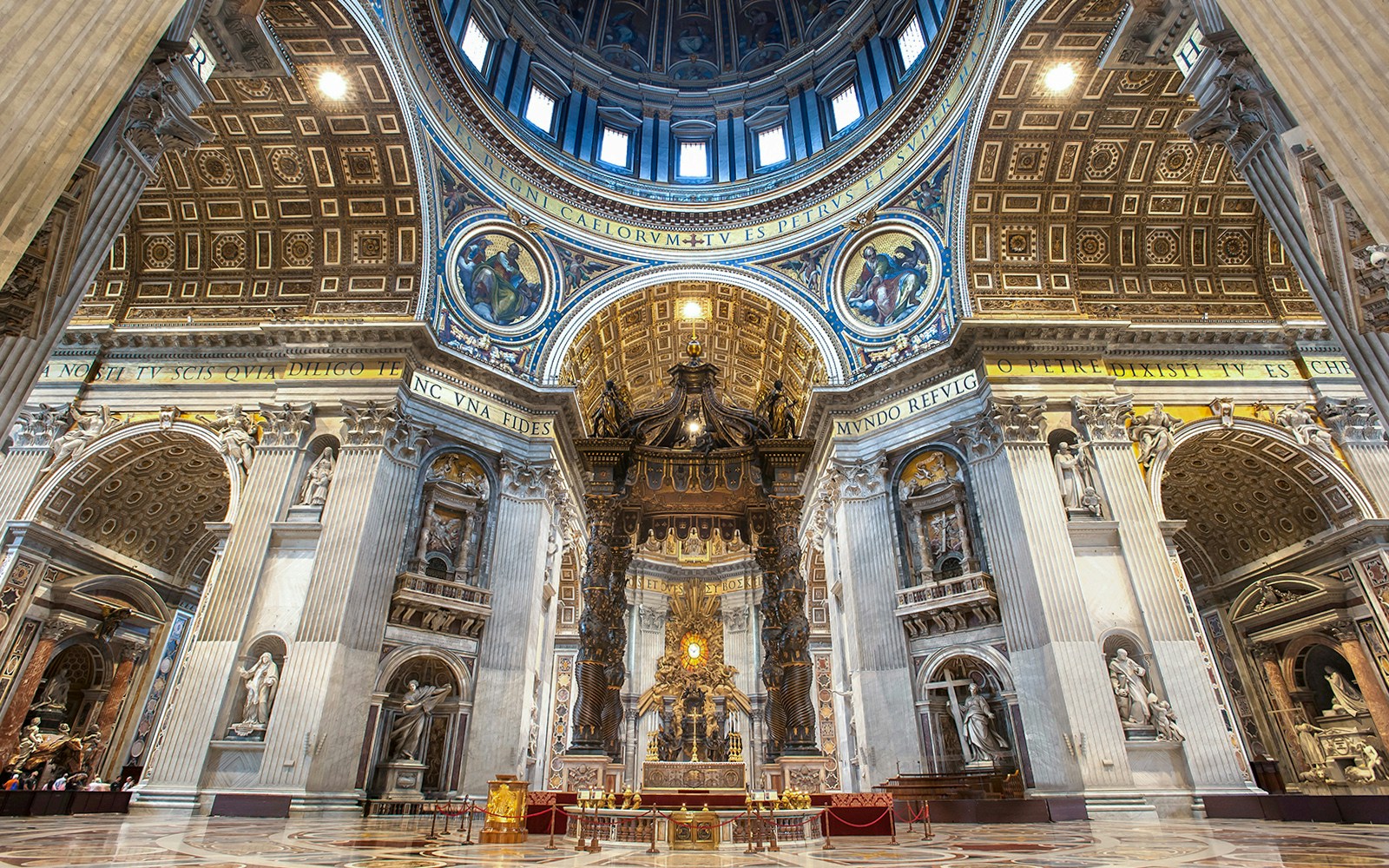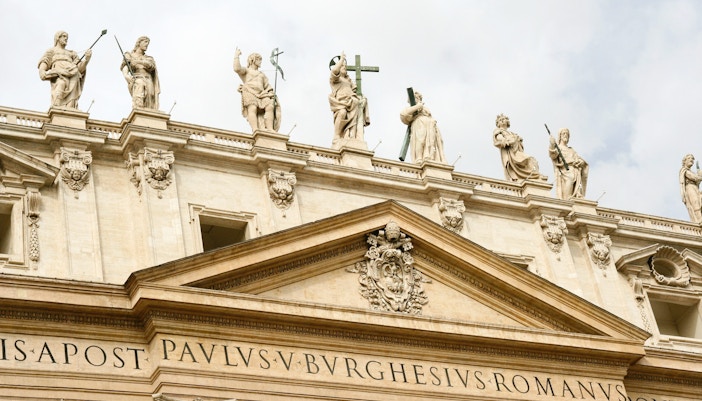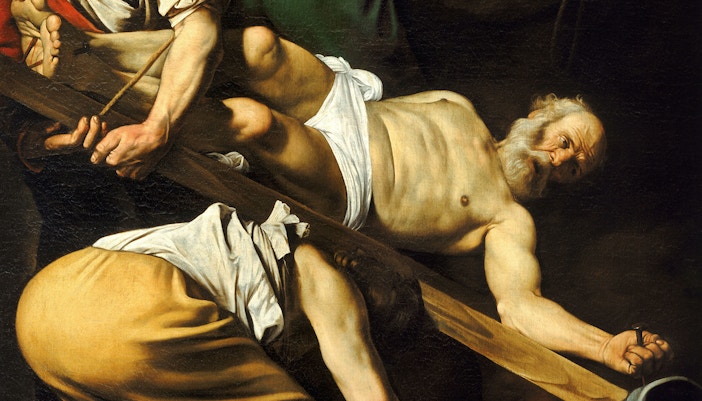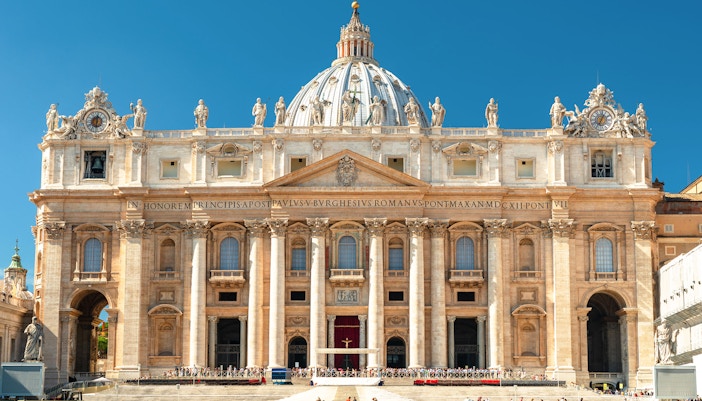St. Peter’s Altar is located inside St. Peter’s Basilica. It is at the far end of the basilica, directly beneath the dome, and is the focal point of the church’s interior. To reach it once you're inside the basilica, simply head toward the main altar area. The altar is situated directly above St. Peter's tomb, so as you walk toward the large central area, you’ll pass under Bernini’s grand Baldachin, the iconic bronze canopy. If you’re already inside, it’s impossible to miss—the altar is the central piece that draws all eyes toward it.
